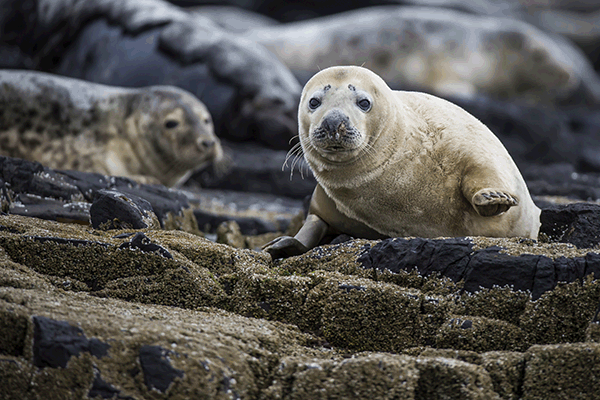Sir David Attenborough calls it his favourite part of the UK to visit in spring – the wildlife haven of the Farne Islands off the Northumberland coast celebrates 90 years in the care of the National Trust this week…

The world-renowned Farne Islands, made up of 20 main islands, have been in the care of the National Trust for 90 years. Used for the breeding of 23 types of sea birds, this is one of the best places in Britain to get up close and personal with previously under-threat birds.
The year 1925 is fondly remembered as the year that the National Trust began to care for this cluster of islands off the Northumberland coast, taking over from the previous owner, the infamous Lord Armstrong, a Victorian industrialist. The public purchase of the historic islands led many people to call the Farne Islands, ‘England’s very own Galapagos Islands’.
The Farne Islands have become a brilliant natural conservation site for rare birds, including an impressive 37,000 pairs of puffins. National Trust rangers are the only humans to live alongside the various breeds of eider ducks and fulmars on the island.
Due to the Farne Islands’ high level of preservation, the archipelago has remained virtually unchanged for the last 90 years, despite having reached many milestones during this period, including becoming one of the first group of islands to be designated a Site of Special Scientific Interest in 1951, and then going on to become a national nature reserve in 1993.
Wildlife lovers can take boats from mainland England across to the islands, being careful to miss the tide-concealed, slightly smaller islands and swooping terns flying above.
The Farne Islands’ raw, untouched landscape proves a brilliant research source, and in the eyes of Sir David Attenborough and many other Brits, an all-time favourite part of the UK to experience extraordinary wildlife first hand.

Related articlesBritish Wildlife Photographer Awards |
Click here to subscribe! |
Download BRITAIN Magazine to your mobile today

 No mobile device? Purchase directly on Zinio for your desktop!
No mobile device? Purchase directly on Zinio for your desktop!





 © 2024
© 2024